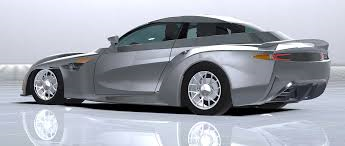
Breaking News
 The 3 Reasons Behind US Plot to Depose Venezuela's Maduro – Video #254
The 3 Reasons Behind US Plot to Depose Venezuela's Maduro – Video #254
 Evangelicals and the Veneration of Israel
Evangelicals and the Veneration of Israel
 Zohran Mamdani's Socialist Recipe for Economic Destruction
Zohran Mamdani's Socialist Recipe for Economic Destruction
 BREAKING: Fed-Up Citizens Sue New York AG Letitia James for Voter Intimidation...
BREAKING: Fed-Up Citizens Sue New York AG Letitia James for Voter Intimidation...
Top Tech News
 HUGE 32kWh LiFePO4 DIY Battery w/ 628Ah Cells! 90 Minute Build
HUGE 32kWh LiFePO4 DIY Battery w/ 628Ah Cells! 90 Minute Build
 What Has Bitcoin Become 17 Years After Satoshi Nakamoto Published The Whitepaper?
What Has Bitcoin Become 17 Years After Satoshi Nakamoto Published The Whitepaper?
 Japan just injected artificial blood into a human. No blood type needed. No refrigeration.
Japan just injected artificial blood into a human. No blood type needed. No refrigeration.
 The 6 Best LLM Tools To Run Models Locally
The 6 Best LLM Tools To Run Models Locally
 Testing My First Sodium-Ion Solar Battery
Testing My First Sodium-Ion Solar Battery
 A man once paralyzed from the waist down now stands on his own, not with machines or wires,...
A man once paralyzed from the waist down now stands on his own, not with machines or wires,...
 Review: Thumb-sized thermal camera turns your phone into a smart tool
Review: Thumb-sized thermal camera turns your phone into a smart tool
 Army To Bring Nuclear Microreactors To Its Bases By 2028
Army To Bring Nuclear Microreactors To Its Bases By 2028
 Nissan Says It's On Track For Solid-State Batteries That Double EV Range By 2028
Nissan Says It's On Track For Solid-State Batteries That Double EV Range By 2028
DeltaWing and DHX to shrink electric vehicle motors without compromising power

The companies claim their electric motors are 75 percent smaller than equivalent-output motors for automotive applications thanks to engineering improvements in heat management.
Much of the bulk of high-torque electric motors, such as those typically used in automotive applications for electrified vehicles, is in the heat management systems engineered into the motor casings, and efforts to reduce this bulk typically result in loss of torque output in heavier usage. DHX claims its design reduces bulk by up to 75 percent without losing thermal management efficiency, thus retaining the motor's expected output in heavy usage.
A smaller, lighter motor reduces weight and volume requirements, which improves the efficiency of the vehicle, resulting in greater range.
In an electric motor, the windings generate most of the heat produced during use. Air or liquid cooling is usually used to dissipate this heat into the motor's frame and case through the stator, which, unlike the windings, is fixed to those elements. In the DHX design, a heat exchanger in the winding pulls heat away and to the casing more efficiently.

 Carbon based computers that run on iron
Carbon based computers that run on iron

